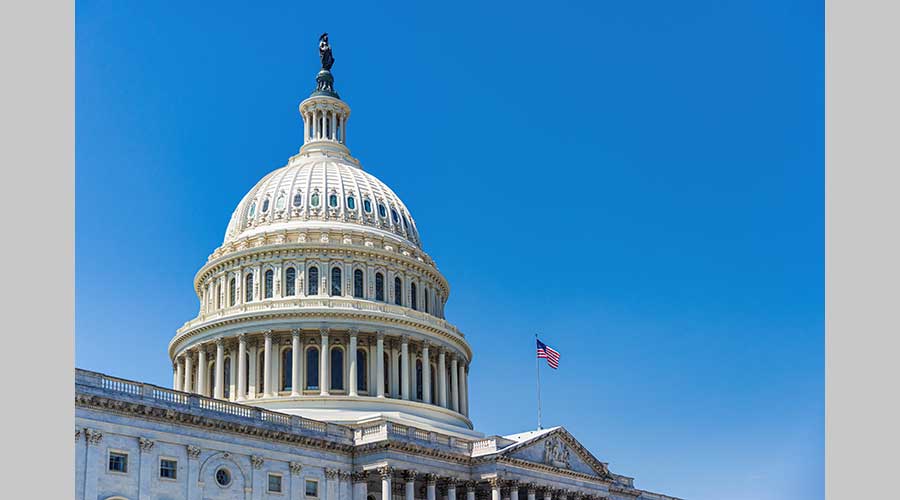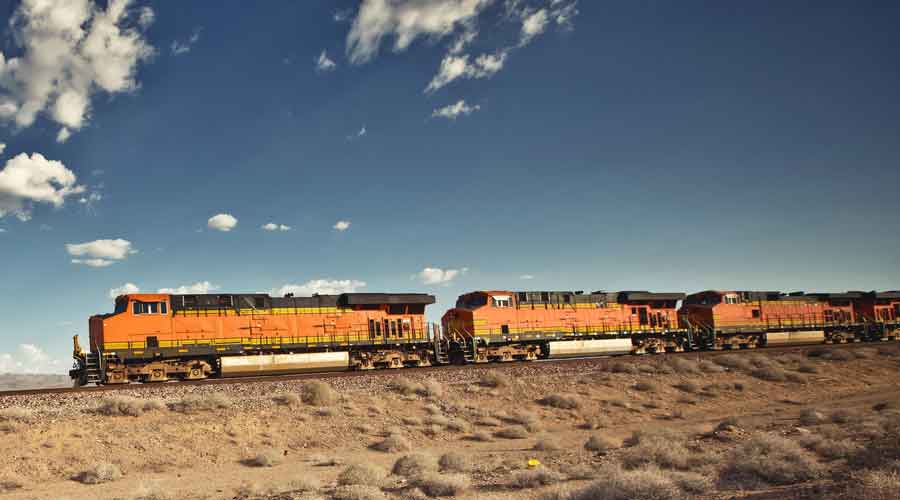Newsletter Sign Up
Stay updated on news, articles and information for the rail industry
Stay updated on news, articles and information for the rail industry
 railPrime
railPrime
Rail News Home
Amtrak
Rail News: Amtrak
9/21/2012
Rail News: Amtrak
Amtrak friends and foes testify at latest House hearing
advertisement
American taxpayers have "shelled out" almost $40 billion for Amtrak's "gravy train" and in return got "an inefficient, costly, Soviet-style passenger-rail system," House Transportation and Infrastructure Committee Chairman John Mica (R-Fla.) said yesterday during the latest in a series of committee hearings examining Amtrak operations.
"Each of the past five years the Amtrak per-ticket has hovered around $50, while the total federal subsidy averages $1.432 billion per year," Mica said in a prepared statement issued after the hearing. "That is a lot of money, especially when compared to subsidy rates per passenger of other modes of transportation, and the situation is not improving."
The hearing also included testimony from Amtrak President and Chief Executive Officer Joseph Boardman, Ted Alves from the Amtrak Office of the Inspector General, and representatives from the National Association of Passenger Rail, the conservative Cato Institute and the bus industry.
Boardman noted that Amtrak is serving a record ridership of 30.2 million passengers, and now covers 85 percent of its operating budget with ticket sales and other revenue, reducing the federal operating portion to 15 percent. Also, Amtrak's fiscal-year 2012 federal operating grant of $466 million is down significantly from a peak of $755 million in FY2004. And for FY2013, Amtrak is requesting $450 million in federal operating support, which is less than what Congress appropriated for the current year, said Boardman.
"Record ridership and revenue, best farebox recover in the U.S. passenger-rail industry, debt cut in half, increased efficiency, better cost controls, improved on-time performance and being the nation's only high-speed rail operator are strong indicators that Amtrak is putting our portion of the federal investment to good and effective use," he said in a prepared statement issued prior to his testimony.
Alves discussed how improvements in the efficiency and effectiveness of Amtrak operations and service can lead to financial benefits that would help reduce the agency’s reliance on federal funds. The railroad received $562 million in FY2011 and $466 million in FY2012 in federal funding for operations; and $922 million in FY2011 and $952 million in FY2012 from the federal government for general capital and debt service, said Alves in a prepared statement.
"Over the past couple of years, Amtrak has taken important steps to set a foundation for improving its operational efficiency and effectiveness," he said. "At the same time, Amtrak has opportunities to do more to improve its bottom line while meeting the expectations of Congress and the American traveling public."
Alves also outlined several Amtrak initiatives that are under way and designed to improve its operations and service; identified opportunities to build on those initiatives and reduce its federal funding; and cited future plans to identify additional opportunities where Amtrak can improve its efficiency and effectiveness.
Following is a sampling of statements from some other witnesses at the hearing:
"I firmly believe there is an opportunity to reform and improve Amtrak that will benefit passengers, taxpayers, workers, and our transportation system as a whole. Passenger rail is essential to our nation's transportation future, and our best hope for easing crowding on our congested highways and airspace. But the time has come for us to explore new options on how we can improve service and reduce subsidies — with our nation"s current budget crisis the status quo simply isn’t good enough." — Railroads, Pipelines and Hazardous Materials Subcommittee Chairman Bill Shuster (R-Pa.)
"Under Amtrak management, passenger trains have become the high-cost solution to any intercity transportation problem. In 1970, before Amtrak took over most of the nation's passenger trains, average rail fares were one-third less than average airfares — about 18 cents (in today's pennies) versus 27 cents per passenger miles. Over the last four decades, inflation-adjusted airline fares have fallen by 50 percent, while inflation-adjusted rail fares have grown by 70 percent so that, today, per-passenger-mile rail fares are 130 percent greater than airfares — about 31 cents versus 14 cents per passenger mile." — Randal O'Toole, Cato Institute
"In our view, it would be much better for Congress to ask management what steps could improve Amtrak’s overall performance rather than to micromanage the company with restrictions such as those relating to food service and what fares can be charged. ... One of the most frequently expressed frustrations of our members, and of some academics, is the propensity of critics to call federal grants to Amtrak 'subsidies' — even those devoted to infrastructure — while calling grants to other modes 'investments.' ... The transportation future that we need is a balanced one that includes buses and planes but also includes a greatly expanded train network." — Ross Capon, president and CEO, National Association of Railroad Passengers
"Each of the past five years the Amtrak per-ticket has hovered around $50, while the total federal subsidy averages $1.432 billion per year," Mica said in a prepared statement issued after the hearing. "That is a lot of money, especially when compared to subsidy rates per passenger of other modes of transportation, and the situation is not improving."
The hearing also included testimony from Amtrak President and Chief Executive Officer Joseph Boardman, Ted Alves from the Amtrak Office of the Inspector General, and representatives from the National Association of Passenger Rail, the conservative Cato Institute and the bus industry.
Boardman noted that Amtrak is serving a record ridership of 30.2 million passengers, and now covers 85 percent of its operating budget with ticket sales and other revenue, reducing the federal operating portion to 15 percent. Also, Amtrak's fiscal-year 2012 federal operating grant of $466 million is down significantly from a peak of $755 million in FY2004. And for FY2013, Amtrak is requesting $450 million in federal operating support, which is less than what Congress appropriated for the current year, said Boardman.
"Record ridership and revenue, best farebox recover in the U.S. passenger-rail industry, debt cut in half, increased efficiency, better cost controls, improved on-time performance and being the nation's only high-speed rail operator are strong indicators that Amtrak is putting our portion of the federal investment to good and effective use," he said in a prepared statement issued prior to his testimony.
Alves discussed how improvements in the efficiency and effectiveness of Amtrak operations and service can lead to financial benefits that would help reduce the agency’s reliance on federal funds. The railroad received $562 million in FY2011 and $466 million in FY2012 in federal funding for operations; and $922 million in FY2011 and $952 million in FY2012 from the federal government for general capital and debt service, said Alves in a prepared statement.
"Over the past couple of years, Amtrak has taken important steps to set a foundation for improving its operational efficiency and effectiveness," he said. "At the same time, Amtrak has opportunities to do more to improve its bottom line while meeting the expectations of Congress and the American traveling public."
Alves also outlined several Amtrak initiatives that are under way and designed to improve its operations and service; identified opportunities to build on those initiatives and reduce its federal funding; and cited future plans to identify additional opportunities where Amtrak can improve its efficiency and effectiveness.
Following is a sampling of statements from some other witnesses at the hearing:
"I firmly believe there is an opportunity to reform and improve Amtrak that will benefit passengers, taxpayers, workers, and our transportation system as a whole. Passenger rail is essential to our nation's transportation future, and our best hope for easing crowding on our congested highways and airspace. But the time has come for us to explore new options on how we can improve service and reduce subsidies — with our nation"s current budget crisis the status quo simply isn’t good enough." — Railroads, Pipelines and Hazardous Materials Subcommittee Chairman Bill Shuster (R-Pa.)
"Under Amtrak management, passenger trains have become the high-cost solution to any intercity transportation problem. In 1970, before Amtrak took over most of the nation's passenger trains, average rail fares were one-third less than average airfares — about 18 cents (in today's pennies) versus 27 cents per passenger miles. Over the last four decades, inflation-adjusted airline fares have fallen by 50 percent, while inflation-adjusted rail fares have grown by 70 percent so that, today, per-passenger-mile rail fares are 130 percent greater than airfares — about 31 cents versus 14 cents per passenger mile." — Randal O'Toole, Cato Institute
"In our view, it would be much better for Congress to ask management what steps could improve Amtrak’s overall performance rather than to micromanage the company with restrictions such as those relating to food service and what fares can be charged. ... One of the most frequently expressed frustrations of our members, and of some academics, is the propensity of critics to call federal grants to Amtrak 'subsidies' — even those devoted to infrastructure — while calling grants to other modes 'investments.' ... The transportation future that we need is a balanced one that includes buses and planes but also includes a greatly expanded train network." — Ross Capon, president and CEO, National Association of Railroad Passengers


 LRW Honors Amtrak’s Acheson As Railway Woman Of The Year
LRW Honors Amtrak’s Acheson As Railway Woman Of The Year
 From Editor-In-Chief Foran: Of Gender Equity And Inclusion
From Editor-In-Chief Foran: Of Gender Equity And Inclusion
 Spotlight On Some Of Today’s Rail Safety Products
Spotlight On Some Of Today’s Rail Safety Products
 Women of Influence in Rail eBook
Women of Influence in Rail eBook








